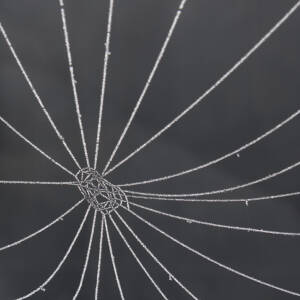Huge, immense, vast, enormous...
but please go large anyway.
There’s a strange optical illusion coming down one particular steep road that runs towards the Thames from Clapham Road: at the top, the hulk in brick, steel and concrete that is the iconic Battersea Power Station looks like it’s just at the end of the street. As you get closer, it gets smaller and smaller. Just one of its mysteries.
Started in the 1930, completed in the 1950s, the largest brick building in Europe dominates views for anyone looking south from the embankment in Chelsea or Pimlico and for anyone driving over Chelsea or Vauxhall Bridges or coming by train into Victoria station. It’s been controversial for most of its life and a landmark for all of mine.
After 50 years of its riverside cranes hauling coal out of barges and swinging it over to heaps on the bank, in 1983 – when I was living not far away – the power station stopped generating electricity and pumping sulphur into the air. (Remember acid rain?) Since then it’s been bought and sold by a succession of developers with grandiose plans (including a theme park – that lot took down the roof) but not enough money. Almost all of its art deco interior has gone. Recently it was sold again, this time to a Malyasian-based consortium, who will soon start work on two floors of retail space, a few floors of offices then some extremely expensive apartments with river views at the top. This weekend is the last chance for the public to see it – as part of Open Houses Weekend – and I went. I walked from near the head of the immense queue and found it had two tails. I chose one and followed it right round the block almost to the head again. I feared I wouldn’t get in. After an hour, I heard I was right – even people an hour in front of me were being told to go home.
Since there are solutions to most problems if you try, I walked nearer the power station so that at least I could take some pictures from the outside. And maybe… Pretty soon I realised that I had got involved in what was left of the original queue and we were moving forward. A mere 15 minutes later, we were inside.
Vast, humbling, dwarfing. Now, after the succession of owners have each vandalised it in their own way, it’s hard to work out where the boilers and turbines were and how they fitted together. But the astonishing cathedral windows still contain the ghosts of themselves.
Edit with more information in response to comments below - 30 years too late for much of this Grade II*-listed building, the new owners are planning to be sensitive about the redevelopment. They have found the two factories that made the original bricks and ordered humdreds of thousands more, to be made expensively 'by hand' since standard manufacture is now in metric not imperial sizes. Damaged bricks will be cut out of the power station walls and replaced individually, a laborious process as the original mortar is extremely hard. The chimneys will be demolished since sulphuric acid has made them unsound and the rubble will be used as hardcore in the new building. Replacement concrete chimneys will be made in the same time-consuming way as the old ones, formed by four foot lengths of wood shuttering which will be moved upwards once the ring below hardens. Parts of the building that are too good for hardcore but which cannot be re-used in the structure, such as these windows, might (it's undecided) be offered to artists to create work for the site. The plan is to get rid of the huge 1980s paintings put up when it was briefly a party venue, but the developer's representative I was talking with listened to another visitor arguing that they too were part of the building's history. So it seems that the most recent attempt at redevelopment might be an improvement. Let's see how much gets done before this lot runs out of money too.
jinglyjan and miranda1008 were there too.

Comments
Sign in or get an account to comment.


